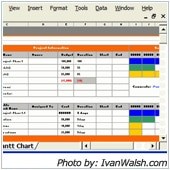
Simply put, Business Intelligence (BI) tools make the process of slicing and dicing large amounts of data easier and faster, so you can gain insight into data to make better decisions. BI tools allow you to view and manipulate large amounts of data and present it in user-friendly format such as via tabular reports or visual charts and graphs.
There has been plenty of coverage about BI for large enterprises, business intelligence is just as important for small businesses.
BI is simply using tools to view, manage, and manipulate what are often large sets of data from the past to be able to gain insights into the future. BI is a type of application software that businesses employ to manage their businesses better—often working along or in concert with their data, transaction and customer management systems.
Some of the common types of BI tools include data querying and reporting software, online analytical processing systems(OLAP), data mining and data visualization systems, digital dashboards, business process and business performance management systems, geospatial systems, and others.
The most widely used BI tool is the common spreadsheet, Microsoft Excel. Most businesses already own and use Excel, so it is easy to understand. If you are using a spreadsheet to help you make sense of your data to make better decisions, you are already using BI. But as your business grows, and the volume of data you need to manage grows along with it, it may be time to consider upgrading to more powerful tools.
Is it time for your business to move beyond Excel? Let us show you how easy BI can be. Contact us so we can help you get started.